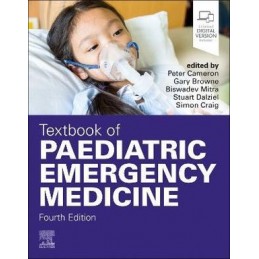- Obniżka


 Dostawa
Dostawa
Wybierz Paczkomat Inpost, Orlen Paczkę, DHL, DPD, Pocztę, email (dla ebooków). Kliknij po więcej
 Płatność
Płatność
Zapłać szybkim przelewem, kartą płatniczą lub za pobraniem. Kliknij po więcej szczegółów
 Zwroty
Zwroty
Jeżeli jesteś konsumentem możesz zwrócić towar w ciągu 14 dni*. Kliknij po więcej szczegółów
This leading text is essential reading for all those working in the paediatric emergency medicine setting who require concise, highly practical guidance that incorporates the latest best practice and evidence-based guidelines.
The Textbook of Paediatric Emergency Medicine provides clear, concise and comprehensive information to support clinicians in what can be a challenging area to provide care. It not only covers diagnosis and management of all common presentations, but it also includes practical tips on communicating with both patients and their families.
As a companion book to Cameron’s Textbook of Adult Emergency Medicine, this volume is specifically tailored to the educational needs of emergency medicine trainees, but is also expected to benefit others working in the emergency setting including paramedics and emergency nurse specialists.
Opis
Indeks: 53813
Autor: Robert Ferris
Indeks: 58874
Autor: Catherine M. Otto
Atlas of Transesophageal Imaging
